Raytheon, part of RTX, has announced the first live maritime test of its AN/SPY-6(V)4 radar in partnership with the US Navy, the company stated.
The trial took place at the Pacific Missile Range Facility in Hawaii, where the radar was evaluated against both air and surface targets.
According to Raytheon, the test marked the first time the (V)4 configuration has produced live data in a maritime environment. This information will be used to refine the system ahead of further trials and eventual deployment at sea.
Barbara Borgonovi, president of Naval Power at Raytheon, said: “The successful live demonstration of the SPY-6(V)4 radar is a major step forward in advancing the capabilities of today’s fleet and supporting allied operations worldwide. The radar will allow existing U.S. Navy Flight IIA Destroyers to significantly upgrade their detection and tracking capabilities, allowing sailors to more effectively monitor and respond to potential threats in real-time.”
The SPY-6 radar family is designed as a scalable system that uses common hardware and software across multiple configurations. This approach, Raytheon argues, allows the US Navy to adapt the radar for different ship classes while reducing costs and easing integration.
The company confirmed that the (V)4 variant is intended specifically for the Navy’s Flight IIA Arleigh Burke-class destroyers, which form the backbone of the US surface fleet. The addition of SPY-6 is expected to enhance the ships’ ability to counter air, surface and ballistic missile threats.
Raytheon said more than 60 US Navy vessels are scheduled to receive SPY-6 over the next decade. Testing and system improvements are set to continue as part of the programme’s development cycle.


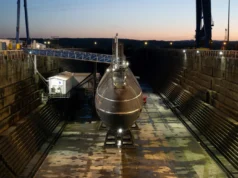
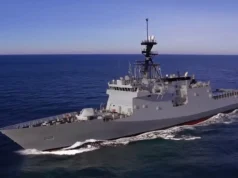
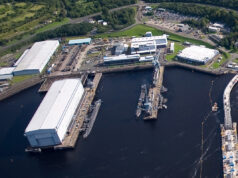

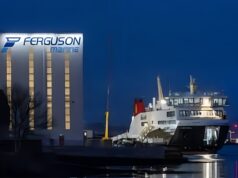
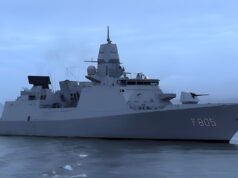
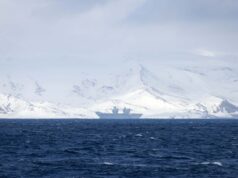

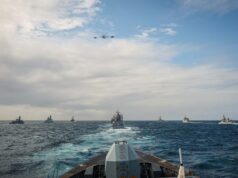


Get the feeling of hype in this PR, the June ’25 GAO report stated that the original SPY-6(V)1 builds for the Burke Flt IIIs have yet to complete tests, one mention of the fourth quarter of fiscal year 2029!
The later SPY-6(V)4 is for backfitting to some of the Burke Flt IIAs if authorized, being smaller will have ~65% of the capability of the (V)1 – (US Navy stated that radar sensitivity scales as a cube of the size of the radar aperture.)
Its sensitivity is roughly half the size at twice the distance of a SPY-1. Which is impressive in itself.
Hi Nick,
The full Flight III SPY-6(V)1 array is already on USS Jack H. Lucas (DDG-125), which has been in commission since 2023. Full testing might not finish till 2029, but it has definitely started on DDG 125. This is the test campaign for the radar as the first-in-class ship, and naturally takes time. Several other Flight IIIs are in various stages of completion at 2 shipyards.
The smaller, rotating SPY-6(V)2 is already in commission aboard the USS Richard M. McCool Jr. (LPD-29).
The small, fixed face SPY-6(V)3 will be fitted first on the (delayed) Ford class carrier Fohn F. Kennedy (CVN 79).
The SPY-6(V)4 for the Flight IIA backfits definitely seems to be authorized, with at least 16 Flight IIAs looking to get it. This will be in conjunction with the large, new and very powerful SLQ-32(V)7 EW suite. USS Pinckney (DDG 91) will get SPY-6(V)4 first, she already has SLQ-32(V)7. the USN FY26 budget already has SPY-6(V)4 installations funded on 4 Flight IIAs.
Hi Nick, the reason its smaller is an above deck weight issue. The old SPY-1D is said to weigh about 13,030 lb (5,910 kg) and is of a similar height/width to SPY-6-V1. But it is a passive electronically scanned array (PESA). Which means the transmitter and receiver are not part of the radiated elements, compared to the more modern active electronically scanned array (AESA) such as SPY-6. Due to the modules being combined transmitter-receiver units, they weigh substantially more than what you’d use for a PESA. Hence why the Flight 2 Arleigh Burkes can only fit 24 of the SPY-6 modules, whereas the larger Flight 3 can handle 37 modules.
Agree, the Burke destroyer displacement is near enough maxed out, they never took the option to add a mid-hull plug, CBO figures showed the original light displacement was 6,624 long tons, by Flight IIA it was 7,033 tons and upped again with Flight III to 7,597 tons an increase of only 564 tons on the IIA – 9,714 FLD. USN rules state destroyers should have 10% allowance built in for future life growth, all ships increase in displacement throughout their life, but in in actuality that has been exceeded and Burkes had to have additional ballast added to maintain stability margins.
The follow-on to the old Burke which dates back to the ’80s/90s is the proposed 15,000 FLD DDG(X) to order perhaps in 2032/33, the two Japanese ASEV destroyers currently in build are 16,000 FLD + ships with its SPY-7 radar for approx. same cost as a Flight III.
.
Always amazed by the depth of knowledge displayed on here on subjects like this.
Knowing absolutely nothing about these radars ,I would like to ask how do these compare to the radars on the type 45 destroyer??
Not a radar man but as understand the basics radar sensitivity scales as a cube of the size of the radar aperture, so you would have to know the physical size of the arrays of the radars your comparing and also SPY-6 uses the more modern GaN T/R modules which can handle significantly higher power densities for higher RF energy output, typically 5-10 times greater than GaAs T/R modules as used in the Sampson radar of the T45, the GaN advantage stems from superior thermal conductivity and higher breakdown voltage.
Another claim have seen made is that the Burke SPY-6(V)1 having four fixed arrays for continuous coverage does not lose tracks whereas Sampson being a rotating radar though with back to back arrays always the possibility it can lose track of a manoeuvring target in the dead phase e.g. hypersonic missiles and it would take 6-8 seconds to reacquire. I’m sure other factors will be applicable. Though sure Sampson adequate for its Aster 30 whereas Burke needs the its much longer range radar for it long range SM-6 and SM-3 missiles, note the L-band long range S1850M radar is also fitted on the T45 which now replaced in production by the newer GaN SMART-L MM/N being fitted to the upgraded French and Italian Horizon frigates.
Many thanks for your reply
SAMPSON is, as you say, double sided and rotates at 30 rpm. With a 120 degree scan angle illumination loss would be less than a second for a given target.